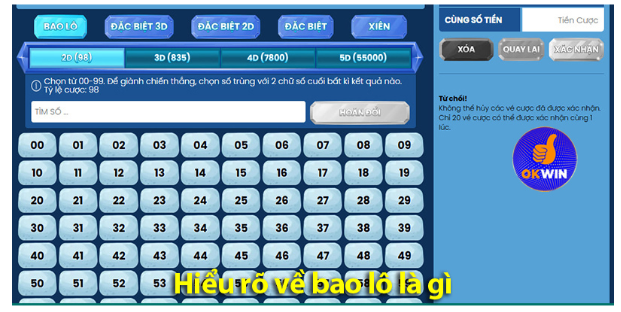Numbers, Risk Thresholds, and a Cool Head: Playing the Lottery Like a Mathematician on Okwin
To play the lottery effectively, intuition needs to be turned into a method: read the data, understand probability, set a budget, take notes, and adjust based on feedback. Instead of chasing myths, treat every number as a hypothesis and every ticket as an experiment. On https://okwin88.co/ , fast tools and clear history help you stay consistent, make steady decisions, and keep a cool head.

Data and Applied Probability
The key to effective play is converting gut feelings into numbers. You need frequency by time frame, standard deviation, tail correlations, and hypothesis testing. On Okwin, ticket history allows you to extract repeating patterns for grounded predictions, avoiding emotional bets that burn your bankroll.
Minimum Frequency Framework
Build a frequency table for pairs of numbers over 7, 14, and 30 days; add standard deviation and trend. Don’t chase “hot” numbers that just hit—focus on stable sequences with low error. On Okwin, highlight pairs that cross expectation thresholds but remain within range; allocate capital based on reliability and keep a safety margin to adjust when trends shift. Always compare with the baseline to avoid being misled by noise.
Quick Hypothesis Testing
Every belief in a “lucky string” should pass a minimum test: select a data window, split into training and test sets, measure hit rate and net profit after fees, and compare against a “do nothing” baseline. If the Sharpe ratio is negative—stop. Set stop-loss rules, scale down when confidence weakens, and never chase losses with emotional bets. Don’t try to guess the future; carefully measure the present.
Allocating Capital by Confidence
Instead of betting evenly, weigh more heavily on models with stronger statistical edges. Use fractional Kelly to manage risk, or fixed ratios during volatility. On Okwin, group tickets by channel and note your reasoning; scale down when confidence drops. The golden rule: preserve enough bankroll to survive rare losing streaks. Ask the hard questions before every ticket to stay sharp.
Entry Process and Risk Management
A streamlined process protects you when the market is fast. Standardize three steps: choose based on data, size the bet by rules, and place it consistently. On Okwin, templates speed up orders and reduce input errors. When volatility rises, scale down, breathe, and focus on survival.
Three-Step Entry Model
Before closing time, review frequency tables and risk notes; set priority pairs in advance.
- Step one: place a small test order to check speed and fees.
- Step two: execute the main order at the preset ratio.
- Step three: add a small supplement only with supporting confirmation from other variables—never chase when crowd psychology pushes numbers up.
Good decisions come from data, not fleeting hunches.
Stop-Loss and Exit Strategy
Stop-losses save your wallet from rare error streaks. Set both a percentage of total capital and a daily maximum. If the data reverses, exit immediately—don’t wait to “recover.” On Okwin, configure reminders by time and absolute value to stay disciplined. After each session, review early and late exits to refine rules. Patience saves more capital than any fancy trick.
Operational Errors and How to Reduce Them
Errors come from network lag, input mistakes, or timing mismatches. Use a checklist before confirming: numbers, size, payment channel, deadline. A numpad reduces typos. On Okwin, save ticket templates and name them consistently to cut steps. Most importantly: stop when tired. Even the best rules fail if your brain runs on autopilot. When in doubt, scale down and wait for clarity.
Budget, Mindset, and Transparent Tracking
Budget keeps you safe, mindset keeps you steady, and transparency makes your decisions verifiable. Split capital by day, set loss limits, lock in withdrawals after wins, and schedule rest days. Notes serve as external memory. On Okwin, transaction logs help you compare plan vs. execution and spot early drifts.
Budget as a Safety Valve
Divide capital by day and ticket type; each part has a max number of bets and a money ceiling. Use fixed ratios to avoid reckless acceleration after losses. Record emotions next to results; if you spot a chasing pattern, scale down and take longer breaks. The best safety valve is stopping on time. Consistent measurement turns strategy into an auditable system.
Notes as a Learning Path
A decision log turns vague memory into data. Record: belief before entry, reason for choice, stake size, outcome, and lessons learned. On Okwin, tag by number pair, date, and strategy. After a month, you’ll see systematic errors to correct. The clearer the learning path, the less room emotion has to interfere. Test hypotheses on data before scaling up.
Transparency Builds Trust with Yourself
Transparency isn’t just for others—it’s how you verify yourself. Keep receipts, reference codes, timestamps, and bonus accounting methods. On Okwin, track policy changes and save screenshots of updates. With full evidence, you argue less with yourself and focus energy on strategy. Simple rules filter signals better than short-term tricks.
Conclusion
chơi lô hiệu quả is not about chasing luck, but about making a chain of small, data-driven, disciplined, and honest decisions. You don’t need to win every day; you need a process that keeps you from following the crowd and protects your bankroll against swings. Use the framework here, log consistently, and adjust when reality speaks. On Okwin, you can stay clear-headed—and know when to stop.

